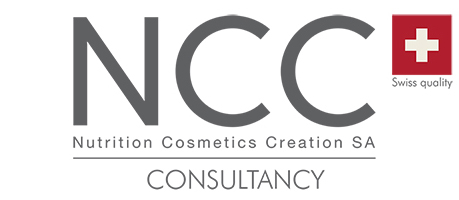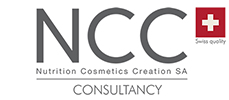Launching a product on the market is critical for any business. However, it is essential to have a comprehensive strategy in place to evaluate the performance and impact of a product on the market. As a consequence, the marketing needs to understand its reception, identify areas for improvement, and make informed decisions for future growth. In this article, we will explore various metrics and approaches to measure the success of a product after its launch.
Key Performance Indicators (KPIs)
Key Performance Indicators (KPIs) are quantifiable metrics that help measure the success of a product once it is launched on the market. These indicators provide insights into the product’s performance against pre-determined goals and objectives. Here are some important KPIs to consider:
Sales and Revenue, Market Share, Customer Acquisition and Retention: key of sucess on the market ?
Tracking the sales figures and revenue generated by the product is a fundamental KPI. It helps assess the product’s market acceptance, demand, and overall financial performance.
Measuring the product’s market share in relation to competitors insights into its competitive in capturing a portion of the target market. As a consequence, increasing market share indicates a successful product.
Evaluating the number of new customers acquired and the rate of customer retention helps gauge the product’s appeal. At the end, a high customer acquisition rate and low customer churn indicate a successful product.



.
.
.

Customer Satisfaction and Feedback
Collecting customer feedback through surveys, reviews, and social media interactions is crucial to understand customer satisfaction levels. Positive feedback and high satisfaction scores indicate a successful product, while negative feedback highlights areas for improvement.
Return on Investment (ROI)
Assessing the ROI of the product helps measure its financial success. By comparing the product’s revenue against the investments made in its development, production, and marketing.
Cost per Acquisition (CPA) to challenge success on the market
Calculating the cost per acquisition, which includes marketing and sales expenses, provides insights into the efficiency of customer acquisition efforts. Finally, a lower CPA indicates a more cost-effective product launch.
Product Adoption Rate is a vital KPI to tracke the rate at which customers adopt the product. Furthermore, it helps assess the product’s appeal, usability, and the effectiveness of marketing and communication strategies.
Customer Lifetime Value (CLV), Time to Market, Competitive Analysis
Evaluating the average revenue generated by a customer over their lifetime helps determine the long-term value and profitability of the product. At the end, a high CLV indicates a successful product with strong customer loyalty.
Measuring the time it takes for the product to reach the market from the initial development stages. Indeed, a shorter time to market indicates efficiency and agility in product development and launch, which can contribute to its success.
Conducting regular competitive analysis helps evaluate the product’s performance to competitors. It provides insights into the product’s unique selling points, competitive advantages, and areas that need improvement.


.

.

User Engagement and Adoption
In this way user engagement and adoption are factors measuring the success of a product once it is launched on the market. These metrics focus on understanding how customers interact with the product, how quickly they embrace its features, also the overall user experience. Here are key metrics to consider for measuring user engagement and adoption:
-User Activity and Time Spent
High user activity and longer time spent indicate strong interest for the product.
-User Onboarding
Evaluating the onboarding process helps measure how effectively new users understand and adopt the product. Metrics to consider include the time it takes for users to start using the product and the completion rate of onboarding steps.
-Feature Usage
Analyzing which product features are most frequently utilized by users helps identify the core value propositions and areas of interest. It also highlights any underutilized features that may require improvement or better promotion.
-User Retention
Measuring user retention rates over time helps determine the product’s ability to retain and engage users. Higher retention rates indicate a more successful product with sustained user interest.
-Active Users
Tracking the number of active users within a specific timeframe provides a clear picture of user engagement. Increasing active users suggest a growing user base and a successful product.
Market Feedback and Perception
Besides market feedback and perception are crucial aspects of measuring the success of a product once it is launched on the market.
Indeed nderstanding how the product is received and perceived by the target market helps businesses identify strengths, weaknesses, and opportunities for improvement. Here are key approaches and metrics to consider for measuring market feedback and perception:
Brand Reputation
Monitoring brand reputation through online sentiment analysis moreover tracking brand mentions helps assess the overall perception of the product in the market. Positive sentiment as well as also a strong brand reputation indicate a successful product.
Customer Reviews and Ratings
Analyzing customer reviews and ratings on platforms, such as e-commerce websites, social media, and review sites, provides insights into the product’s performance, quality, also moreover customer satisfaction levels. Positive reviews as well as high ratings indicate a positive market perception.
Social Media Monitoring to evaluate success on the market
At all events keeping an eye on social media conversations and mentions related to the product helps gauge public sentiment, identify potential issues, and engage with customers directly. Actually it provides real-time feedback and an opportunity to address customer concerns promptly.
Industry Expert Reviews
Engaged industry experts and soliciting their opinions and reviews can provide valuable feedback and help validate the product’s value proposition. Positive reviews from experts can enhance the product’s credibility and market perception.



CONCLUSION:
Finally measuring the success of a product once it is launched on the market is a multifaceted task that requires careful consideration of various metrics and indicators. By tracking key performance indicators, evaluating user engagement and adoption rates, and gauging market feedback and perception, businesses can gain valuable insights into the product’s performance and make informed decisions for future growth. Regular evaluation and analysis of these metrics enable businesses to identify strengths and weaknesses, make necessary adjustments, and improve the product’s overall success in the marketplace. To sum up, effective measurement of product success empowers businesses to align their strategies, meet customer expectations, and drive long-term profitability.
Nataly Komova, fitness and nutritionist expert
Human Nutrition & Health, BSc Hons
Website: https://justcbdstore.com/nataly-komova-2/
To read too:
- White label, a solution?
- Probiotics: What is this new trend consisting of bacteria for In & Out use?
- Cosmetic Packaging: Airless, bio-sourced & refillable for greener products
- Cosmetics: towards green formulation
- Powdered cosmetics, a trend to follow?
- Regulation and development of cosmetic ranges or well-being products
- https://www.instagram.com/mesactifsprecieuxbyncc/
Do you want to develop new products? Discover our free In&Out product catalogue!



